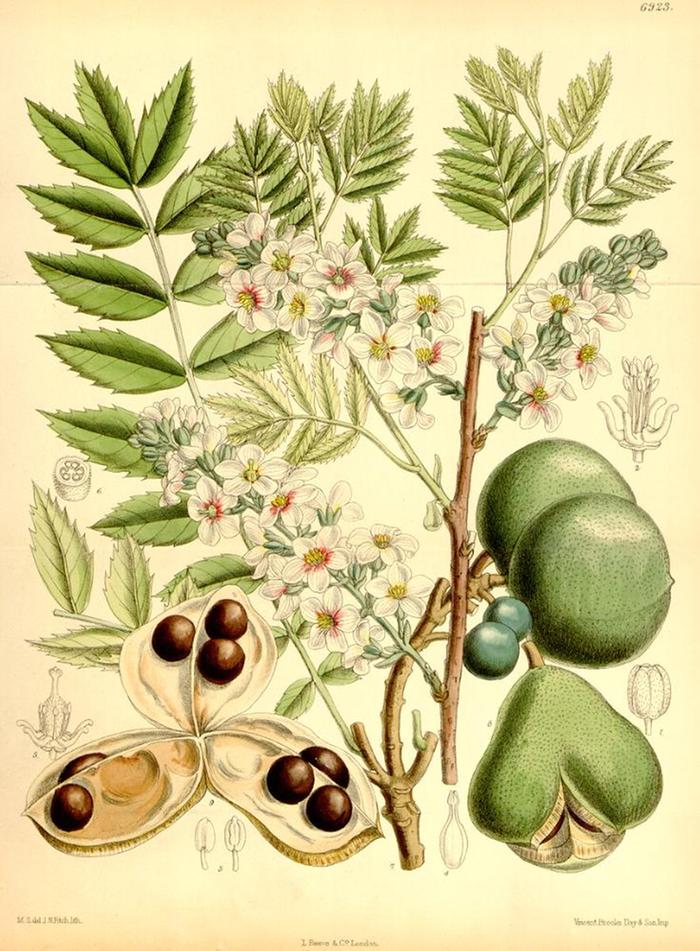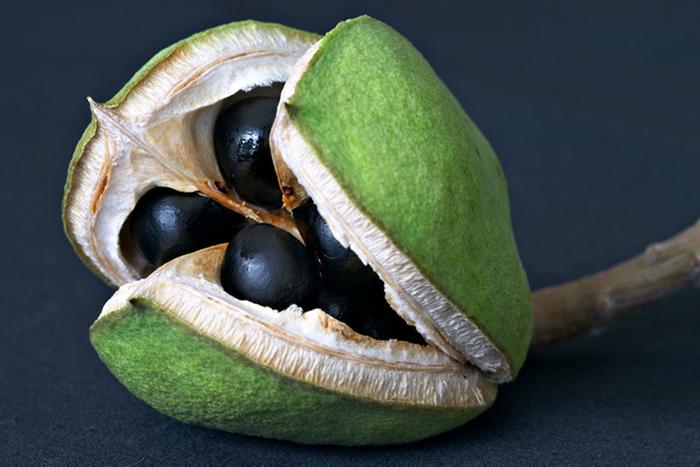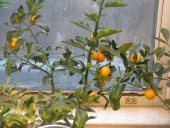
 9
9





Xanthoceras sorbifolium (yellowhorn, shiny leaf yellowhorn, goldenhorn, Chinese flowering chestnut) is a woody perennial in the soapberry family, Sapindaceae, native to northern China in the provinces of Gansu, Hebei, Henan, Liaoning, Nei Monggol, Ningxia, Shaanxi, and Shandong.
It is a large shrub or small tree growing to 8 m tall. The fruit is an oval leathery capsule 5–6 cm diameter, which splits into three sections at maturity to release the 6–18 seeds; the seeds are black, 1.5 cm diameter, resembling a small horse chestnut seed.
The genus name means 'yellow horn'. The species name refers to the leaves, similar to those of rowans (Sorbus). It was originally spelled as sorbifolia, but this is a grammatical error that was corrected to sorbifolium under the ICBN.
The leaves, flowers, and seeds of yellowhorn are all edible.

Pecan Media: food forestry and forest garden ebooks
Now available: The Native Persimmon (centennial edition)





"...specialization is for insects." - Lazarus Long
Universal Introduction to Permies
How Permies.com works
 2
2




Propagation is by seed soaked for 24 hours (sometimes 48 hours is necessary) and gently nicking the seed coat near the pore, slowly shaving it away until you see the barest glimmer of white, being very careful not to cut the embryo. Re-soak for 12 hours and sow in moist peat / sand / perlite mix. Germination will usually occur in 4 - 7 days.
Pecan Media: food forestry and forest garden ebooks
Now available: The Native Persimmon (centennial edition)











"...specialization is for insects." - Lazarus Long
Universal Introduction to Permies
How Permies.com works
 1
1








Pecan Media: food forestry and forest garden ebooks
Now available: The Native Persimmon (centennial edition)
 3
3




 On my first batch I dug out all the ones that didn't germinate, and nicked them again, and back in the peet. Some took longer than others but they kinda all germinated. You have to nick them pretty severly (without hurting the embryo too much). I use a very sharp chef knife and cut out small strips until I see a good portion of white (2-3 mm) . No stratification. Apparently it helps but so far, the nicking works very well. I germinated them with a 18/6 light cycle.
On my first batch I dug out all the ones that didn't germinate, and nicked them again, and back in the peet. Some took longer than others but they kinda all germinated. You have to nick them pretty severly (without hurting the embryo too much). I use a very sharp chef knife and cut out small strips until I see a good portion of white (2-3 mm) . No stratification. Apparently it helps but so far, the nicking works very well. I germinated them with a 18/6 light cycle.
Fitch Bay, Quebec, Canada (4b)
 2
2




Check out Redhawk's soil series: https://permies.com/wiki/redhawk-soil
 3
3




 12
12








Check out Redhawk's soil series: https://permies.com/wiki/redhawk-soil




 1
1








 1
1




 1
1




 1
1












Pecan Media: food forestry and forest garden ebooks
Now available: The Native Persimmon (centennial edition)
 1
1




 1
1








S Usvy wrote:If this helps anyone looking for seeds (especially in Canada) - I got mine last fall from this seller. Out of 12 seeds, only 2 did not germinate. I used a piece of sandpaper to gently nick the seeds, then popped them in a plastic container with a moist paper towel, and shoved them in the fridge. They were germinating within 4-6 weeks. As soon as the first one germinated, I took the whole container out to make the process faster, and was planting them as germination was occurring. They're growing indoors now, seem to do really well - I've never seen a tree grow that fast from a seed. They do seem to like deep soil - I have mine planted in tall buckets, 2-3 plants per bucket, until it's summer time outside.
http://www.ebay.ca/itm/Yellowhorn-Xanthoceras-sorbifolium-Tree-Seeds-Showy-Hardy-Fall-Color-/270736778449?




Jc Desj wrote:By the way, does someone know what time it takes the plants to go from seed to nut?
So I have a couple of 1.5' tall Xanthoceras on this photo. I also have 40 more germinating right nowOn my first batch I dug out all the ones that didn't germinate, and nicked them again, and back in the peet. Some took longer than others but they kinda all germinated.




Medicinal herbs, kitchen herbs, perennial edibles and berries: https://mountainherbs.net/ grown in the Blue Mountains, Australia
 3
3




 3
3




 2
2




When you reach your lowest point, you are open to the greatest change.
-Avatar Aang








Community Building 2.0: ask me about drL, the rotational-mob-grazing format for human interactions.
 1
1




 1
1




Like my shiny badges? Want your own? Check out Skills to Inherit Property!




 2
2




 3
3




 2
2




Ashley Cottonwood wrote:How do I get my hands on some seed?! I've been looking for some zone for fruit/nut trees!
'Theoretically this level of creeping Orwellian dynamics should ramp up our awareness, but what happens instead is that each alert becomes less and less effective because we're incredibly stupid.' - Jerry Holkins
 4
4




 6
6




 5
5




 3
3




I like to grow and ferment and frolic about and play.

|
What do you have in that there bucket? It wouldn't be a tiny ad by any chance ...
PIE - The Easy Way to Support Permies.com
https://permies.com/t/240094/PIE-Easy-Support-Permies
|









